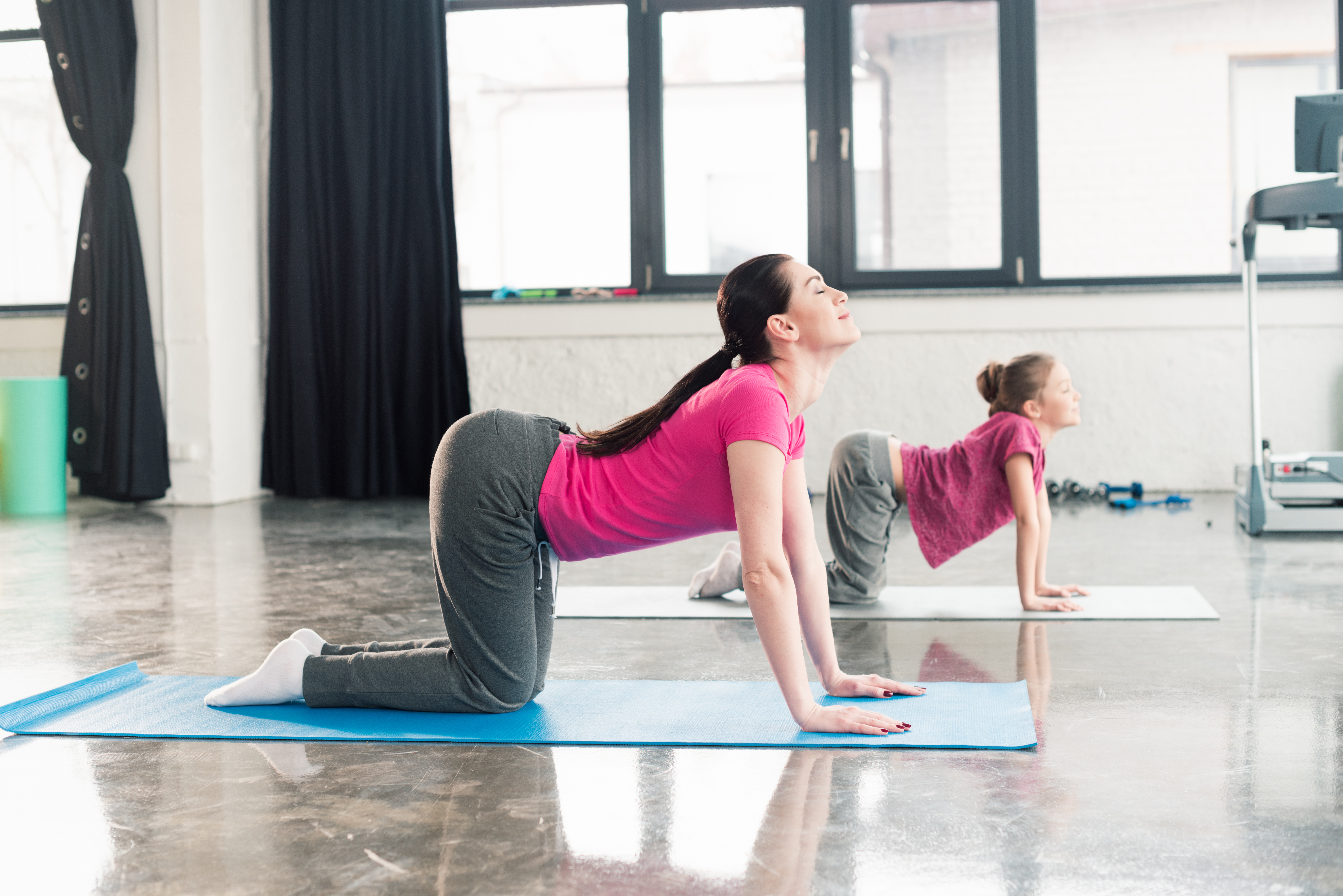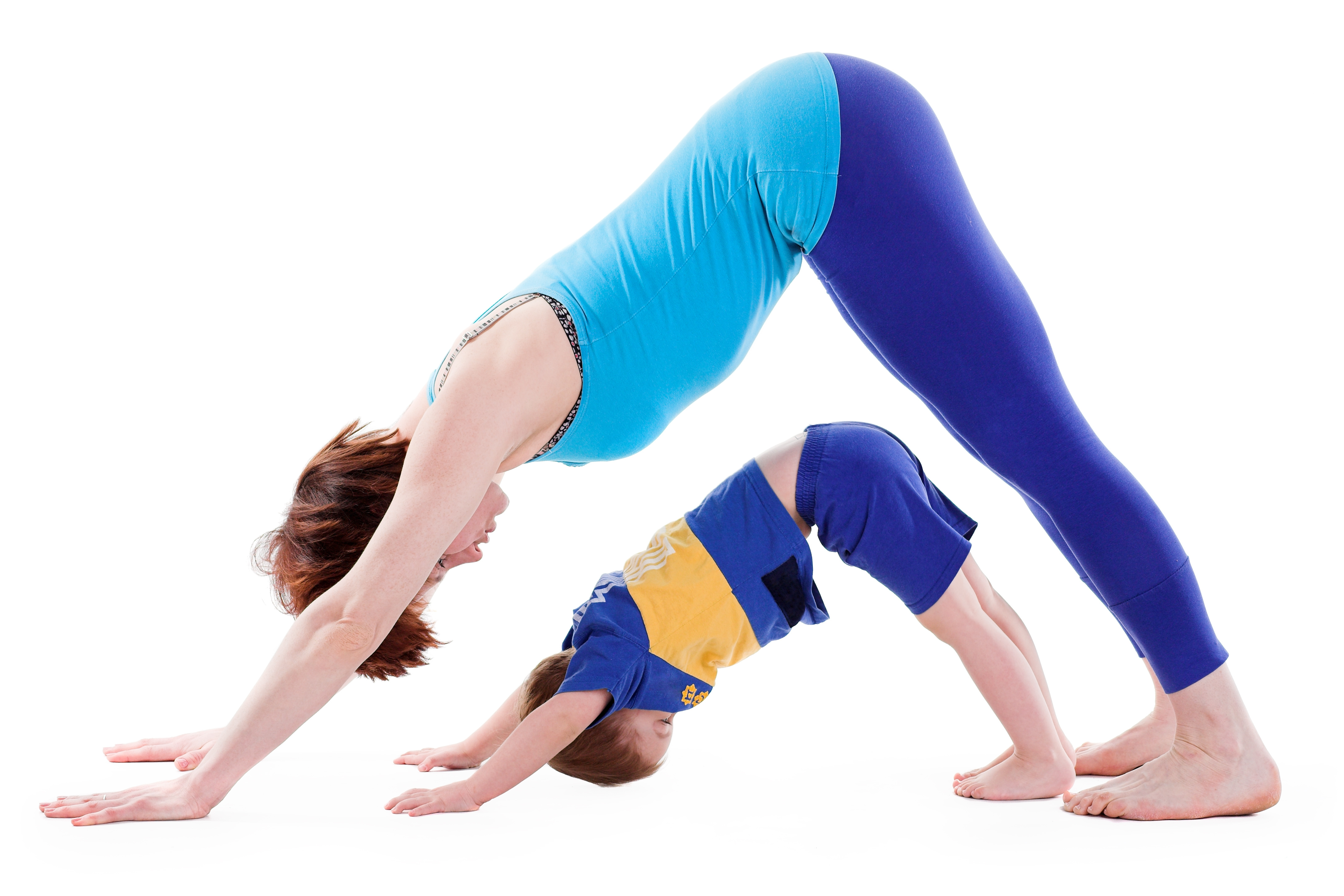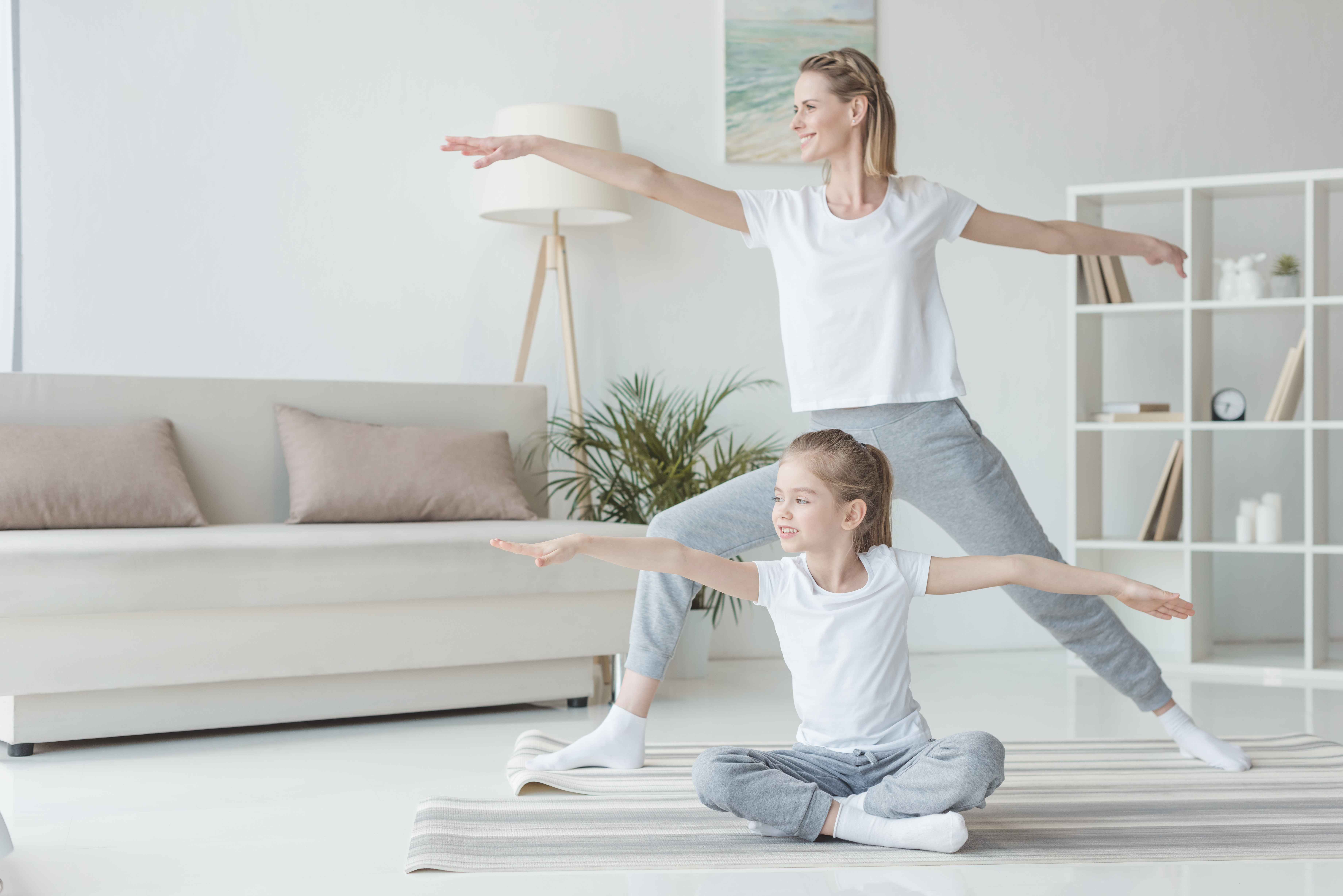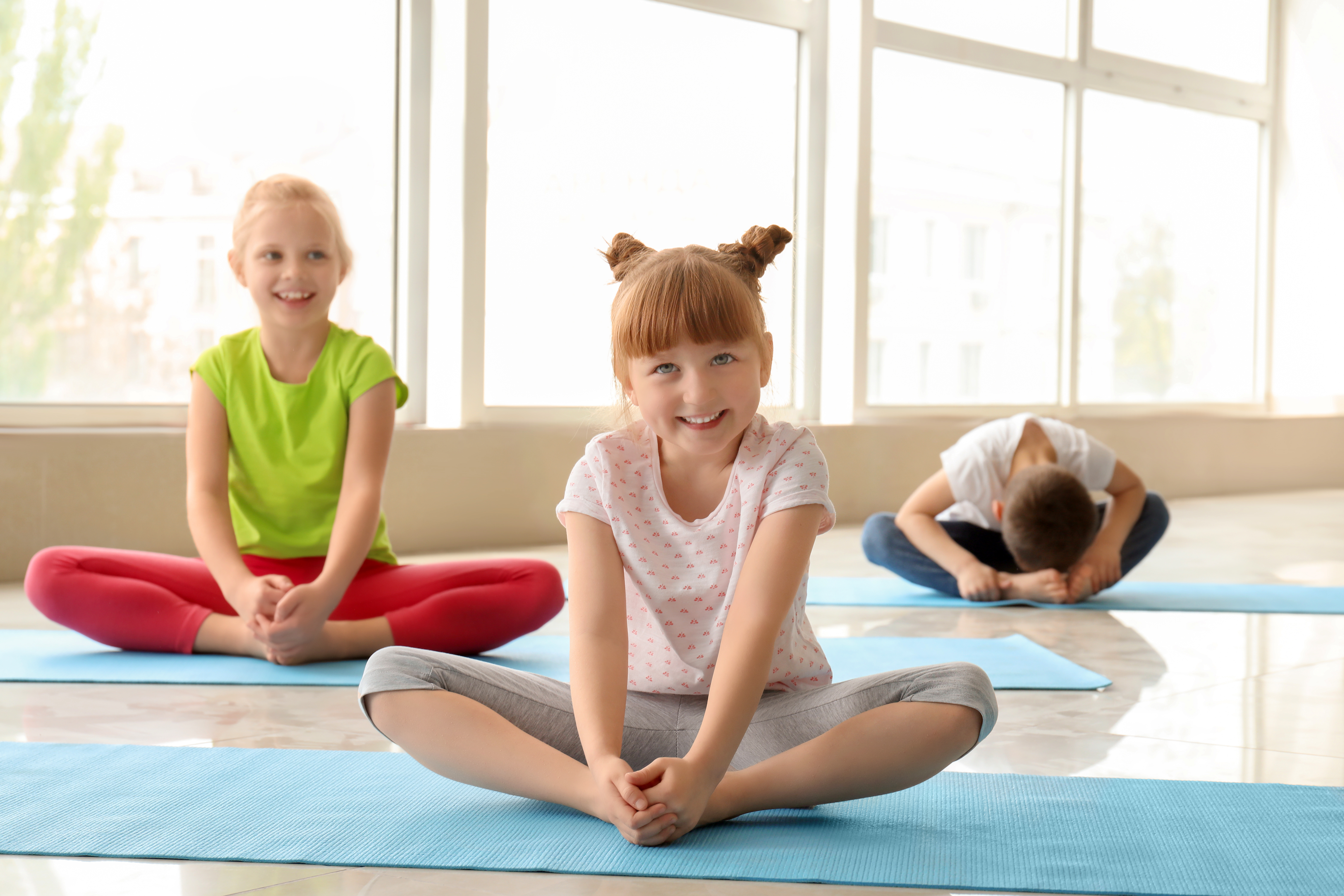View basket (0 items $0.00)

When It’s Just Too Cold Outside: Family Yoga for Wintertime
It’s winter, and in many areas of the U.S. (and the Northern Hemisphere generally) it’s too frigid to stay outside for long. That doesn’t change the need, developmentally speaking, for children and teens to move and stretch, to enhance motor skills, learn about their bodies, and simply stay healthy. Though parents’ specific developmental needs are different, they can significantly benefit from those effects as well! Yoga can offer them.
Practicing yoga together as a family can be a great substitute for going to the playground, park, beach, or on a long walk down local streets when it’s too cold to enjoy the outdoors.
In addition, family yoga is a wonderful way to connect as a family—kinetically, emotionally, mentally, spiritually, and more. Families might even find themselves sharing deep belly laughs! Amidst the stress of winter weather challenges, and just family life in general (with everyone running off to their own obligations), that can be a true gift.
They say that families who eat together, stay together. Could that be the case for yoga as well? Regardless, everyone could have just a bit healthier winter. Let’s take a look at a family yoga sequence to substitute for outdoor activities.
The following is written with parents leading, but with time and a bit of guidance (at least at first), children can lead parts of sessions, even whole sessions! For teens, that process can often be even faster.
Letting children and teens lead can help them build self-confidence, leadership skills, executive functioning, and more. With all elements of safety considered, focus on togetherness and expression over perfect alignment or “achieving” any particular pose. Above all, have fun!
A Yoga Sequence for the Whole Family: Start with “Yoga Zoo” Poses
Marjarasana/Bitiliasana (Cat/Cow Pose) 
-
From Bharmanasana (Tabletop Pose), take Cat Pose (the back coming up, head down, with a breath out), and then Cow Pose (the belly dipping down, head up, with a breath in).
-
With younger children, you can have fun with animal sounds and variations such as “looking at your tail” (twisting to look behind, at one foot and then the other).
-
With older children and teens, you can ask them how it feels to move through the whole spine in a fluid way, and see what discussion may grow from there.
Adho Mukha Svanasana (Downward-Facing Dog Pose) 
-
From Tabletop Pose, reach your arms forward to ground down through the hands (all fingers of each hand, to keep the wrists supported and safe). Lift the forearms to keep the arms active, and keep the hips stacked over the knees.
-
From there, ground into the balls of the feet and raise your hips up for Downward Facing Dog Pose.
-
Just as with Cat and Cow, little ones can enjoy making animal sounds, and with older children/teens you can spark discussion on how the poses feel for them.
Simhasana (Lion Pose)
-
From Downward-Facing Dog, drop your knees down to sit on your heels in Vajrasana (Diamond Pose). Spread your fingers wide and place your palms on your thighs.
-
Breathe in deeply, and then breathe out with a rasping roar-like sound, opening your mouth wide and sticking your tongue out.
-
Breathe in to repeat that two more times. Regardless of age, everyone can enjoy feeling a little silly and youthful with this pose!
Sun-Saluting Warriors 
-
Stand with your feet together, and reach up to the sky, palms together in Urdva Hastasana (Upward Hands Pose). For a little rhythmic fun, particularly with young children, clap three times.
-
Then fold forward into Uttanasana (Standing Forward Fold).
-
Raise your torso up halfway, placing hands below your knees, and say “hello!” to each other.
-
Fold forward again.
-
Place your hands on the floor and step your left foot back to Anjaneyasana (High Lunge Pose). Then raise the torso up for Crescent Lunge. If this is too challenging for any members of the group, they can drop their back knee down.
-
Drop your back heel down and open your chest and hips to the side (opposite to the leg that’s in front) to take Virabhadrasana II (Warrior II). (See above)
-
Flex your muscles—you’re a strong warrior for peace and friendship! Anyone, at any age, can enjoy this play.
-
Then windmill your arms down (swinging the arms down to the ground in a pattern that feels natural) and let your back heel come off the ground to go back to High Lunge.
-
Step your back foot forward to meet your front foot.
-
To finish off the sequence, raise back up to meet the palms up overhead again in Upward Hands Pose. Clap three times again, if members of the group enjoyed this the last time!
-
Repeat the sequence on the other side.
Wind-Down and Meditation
Utkatasana (Fierce Pose) and Navasana (Boat Pose) 
-
From reaching up in Upward Salute, lower down to sit through Fierce Pose (reaching arms up, around the ears, as you do). Maybe play a little game of who can lower down the slowest!
-
From here, move into Boat Pose. Younger children might enjoy singing “Row, Row Your Boat.”
-
All involved, at any age, might enjoy pretending to “heel” or tip to one side, and then come back up, also a great way to strengthen the oblique abdominal muscles! Make sure to take both sides.
Jathara Parivartanasana (Revolved Belly Pose)
-
From Boat Pose, lower down to your back. This is another chance to play at who can lower down the slowest.
-
When lowered down, use your feet to shift your hips left and let your knees fall right. Take 5 to 10 deep breaths.
-
Little ones might be able to stay more engaged if guided to make “snow angel” arms (taking the arms along the floor from up over the head to down toward the knees, and back again).
-
Then bring your knees up, shift your hips slightly to the right, and then let your knees fall left, repeating the twist on the left side.
Baddha Konasana (Bound Angle Pose) and Meditation 
-
Shift your hips back to center, place the soles of your feet together, and then let your knees fall out to the side, with the bottoms of your feet together. If comfortable, close your eyes.
-
If not comfortable in Baddha Konasana, straighten your legs out onto the floor moving into Savasana (Final Relaxation Pose) position.
-
Guide all to imagine a favorite family winter memory—during the holidays, sledding, or a simple walk together in light snow.
-
Remind all that no matter what may transpire in the family, you can always come back to the harmony and warmth within that memory—even in the cold of winter.
-
After a few breaths of letting that settle in, guide everyone to sit up in a comfortable seat. Lead three breaths in and out together, and have all bow Namaste to each other.
More yoga practice tips from YogaUOnline and Kathryn Boland: 4 Ways to Fit Yoga Into Your Day - No Leggings Required.
Study Yoga For Every Body: How to Adapt Poses for Different Situations and Conditions and Purposes a course from YogaUOnline and Olga Kabel.
 Kathryn Boland is an RCYT and R-DMT (Registered Dance/Movement Therapist). She is originally from Rhode Island, attended The George Washington University (Washington, DC) for an undergraduate degree in Dance (where she first encountered yoga), and Lesley University for an MA in Clinical Mental Health Counseling, Expressive Therapies: Dance/Movement Therapy. She has taught yoga to diverse populations in varied locations. As a dancer, she has always loved to keep moving and flowing in practicing more active Vinyasa-style forms. Her interests have recently evolved to include Yin and therapeutic yoga, and aligning those forms with Laban Movement Analysis to serve the needs of various groups (such as Alzheimer’s Disease patients, children diagnosed with ADHD, PTSD-afflicted veterans - all of which are demographically expanding). She believes in finding the opportunity within every adversity, and doing all that she can to help others live with a bit more breath and flow!
Kathryn Boland is an RCYT and R-DMT (Registered Dance/Movement Therapist). She is originally from Rhode Island, attended The George Washington University (Washington, DC) for an undergraduate degree in Dance (where she first encountered yoga), and Lesley University for an MA in Clinical Mental Health Counseling, Expressive Therapies: Dance/Movement Therapy. She has taught yoga to diverse populations in varied locations. As a dancer, she has always loved to keep moving and flowing in practicing more active Vinyasa-style forms. Her interests have recently evolved to include Yin and therapeutic yoga, and aligning those forms with Laban Movement Analysis to serve the needs of various groups (such as Alzheimer’s Disease patients, children diagnosed with ADHD, PTSD-afflicted veterans - all of which are demographically expanding). She believes in finding the opportunity within every adversity, and doing all that she can to help others live with a bit more breath and flow!
Featured Courses








